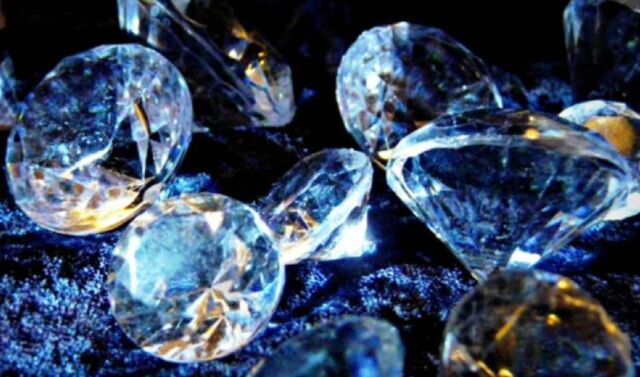
Ultra-hard material such as diamond discovered by scientists that have solved a decades-long puzzle and unveiled a near-unbreakable substance that could rival diamond.
An international team, led by scientists from the University of Edinburgh, in collaboration with experts from the University of Bayreuth (Germany) and the University of Linköping (Sweden), has now achieved a scientific breakthrough. They subjected different forms of carbon-nitrogen precursors to pressures ranging from 70 to 135 gigapascals (about one million times atmospheric pressure) while heating them to temperatures exceeding 1,500 degrees Celsius.
The substance, called carbon nitrides, surpasses the toughness of the second-hardest material, cubic boron nitride, when carbon and nitrogen precursors are exposed to extreme heat and pressure.
This breakthrough new material has significant potential for various industrial applications, such as protective coatings for vehicles and spacecraft, high-endurance cutting tools, solar panels, and photodetectors.
Researchers have been exploring the properties of carbon nitrides since the 1980s due to their exceptional heat resistance, but credible results remained elusive despite decades of efforts.
Dr Dominique LanielFuture Leaders Fellow, Institute for Condensed Matter Physics and Complex Systems, School of Physics and Astronomy, University of Edinburgh, said:
“Upon the discovery of the first of these new carbon nitride materials, we were incredulous to have produced materials researchers have been dreaming of for the last three decades. These materials provide strong incentive to bridge the gap between high pressure materials synthesis and industrial applications.”
Dr Florian TrybelAssistant Professor, Department of Physics, Chemistry and Biology, University of Linköping, explains:
“These materials are not only outstanding in their multi-functionality, but show that technologically relevant phases can be recovered from a synthesis pressure equivalent to the conditions found thousands of kilometres in the Earth’s interior. We strongly believe this collaborative research will open up new possibilities for the field.”
To analyze the atomic arrangement of the compounds under these extreme conditions, the researchers used an intense X-ray beam at three particle accelerators: the European Synchrotron Research Facility in France, the Deutsches Elektronen-Synchrotron in Germany, and the Advanced Photon Source in the United States.
source University of Edinburgh





Leave A Comment